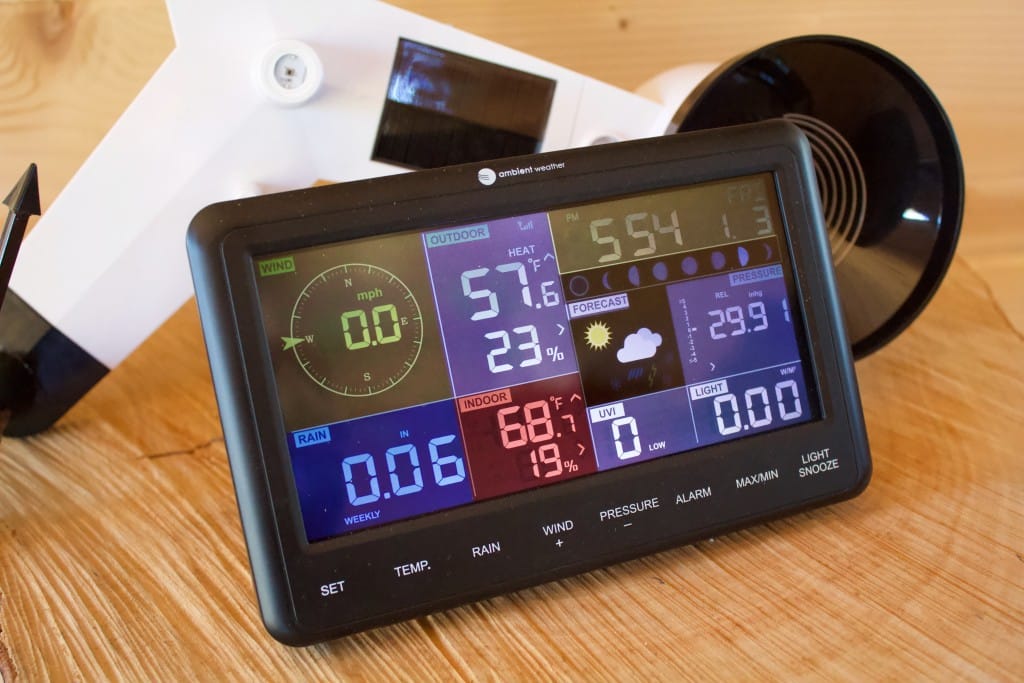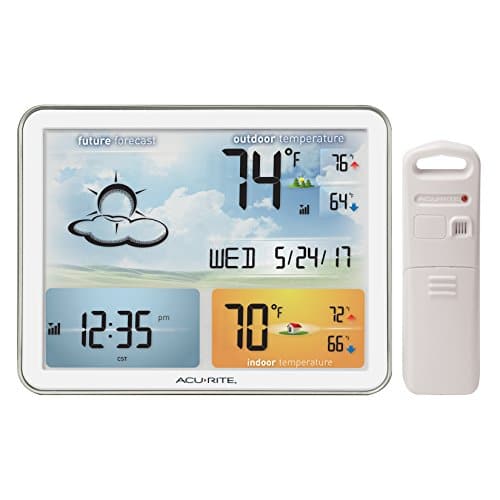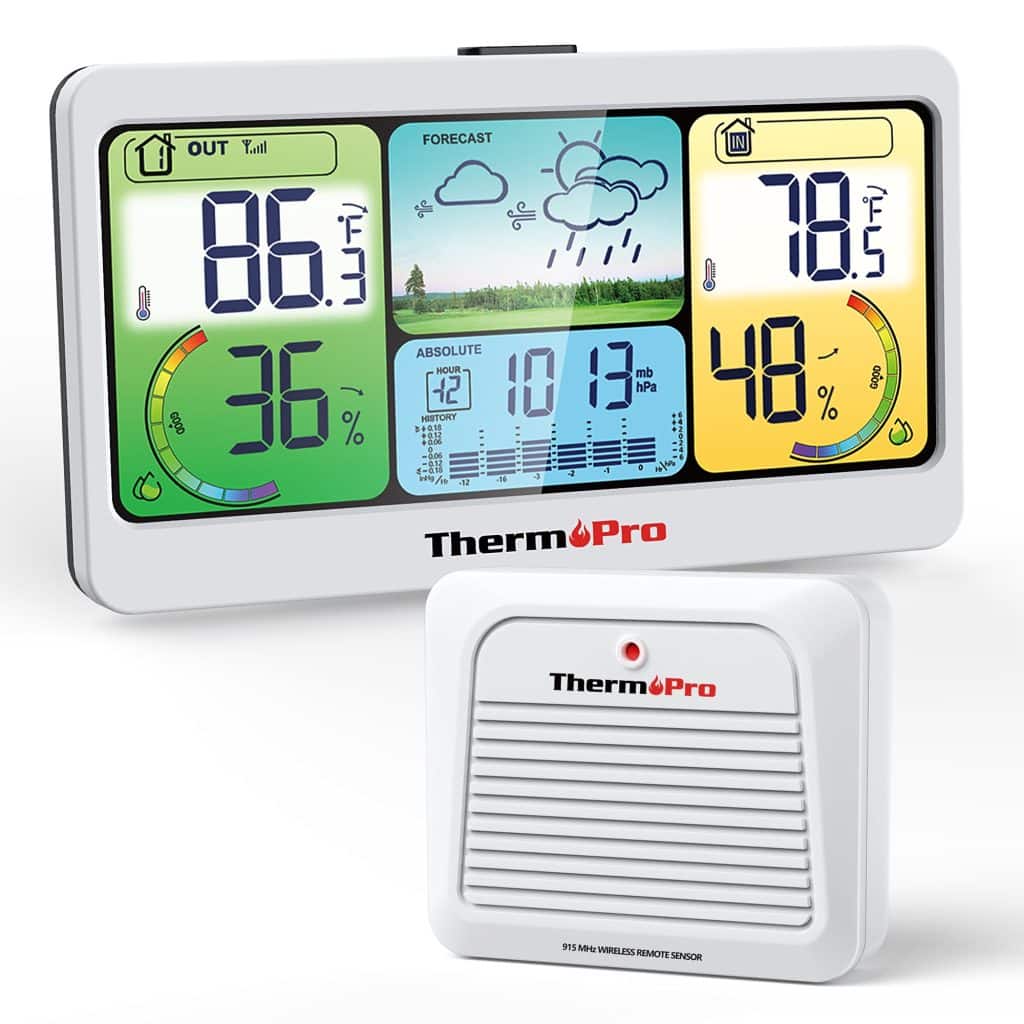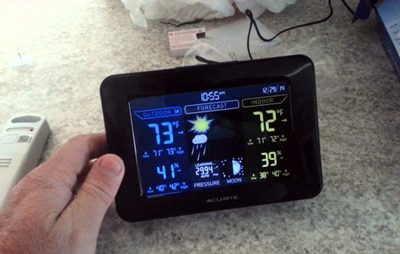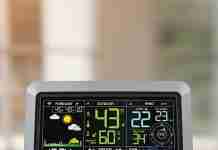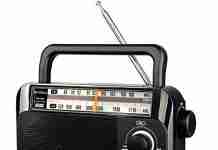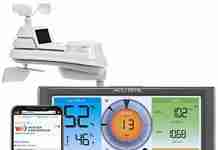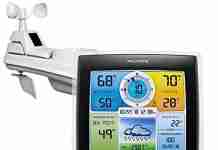We all know how unpredictable the weather can be, causing us to check our phones or rely on outdated forecasts constantly.
But what if there was a solution that could provide real-time weather updates right at our fingertips?
Enter the indoor and outdoor weather station. With its ability to monitor indoor and outdoor conditions, this handy device takes the guessing game out of planning our day.
From temperature and humidity readings to wind speeds and precipitation data, an excellent indoor-outdoor weather station is like having our meteorologist.
Say goodbye to unexpected rain showers or surprise heatwaves – we’ve covered weather updates. An excellent indoor-outdoor weather station is designed to accurately measure and display various weather conditions inside and outside the home.
It provides real-time information on temperature, humidity, barometric pressure, wind speed and direction, rainfall, and other essential weather metrics.
With so many options available in the market today, choosing the best one for your needs can be overwhelming. In this article, we will explore the key features to consider when selecting a reliable indoor outdoor weather station.
Review contents
Accuracy
One of the most important factors to consider when choosing a weather station is its accuracy. After all, a weather station’s purpose is to get reliable data. It is essential to look for a weather station with high-accuracy readings for all the sensors it includes.
Regarding outdoor temperature sensor accuracy, look for a weather station that provides precise measurements even in extreme weather conditions. Similarly, the indoor temperature sensor should be accurate and able to capture any fluctuations in temperature inside your home. The humidity sensor should also be reliable and provide accurate readings of the moisture levels in the air.
Barometric pressure sensor accuracy is crucial for predicting weather patterns, so choosing a station with precise measurements in this area is essential. Moreover, a weather station with a wind speed and direction sensor should provide accurate data on wind conditions.
Lastly, suppose you live in an area prone to rainfall. In that case, it’s essential to choose a weather station with a rainfall sensor that can accurately measure precipitation levels correctly.
Wireless Range
The wireless range of a weather station refers to the maximum distance between the outdoor sensors and the indoor display unit, within which the data can be transmitted wirelessly. It is crucial to consider the size of your property, the distance between the outdoor sensor location, and where you plan to keep the display unit.
A good weather station should have a wireless range that comfortably covers the distance between the outdoor and indoor components. This ensures that you can set up your weather station in a convenient location while still receiving accurate data.
This image is the property of w2f2z6e6.stackpathcdn.com.
Display
The display of a weather station allows you to view the data collected by the sensors. When considering the display, there are a few factors to remember.
Firstly, consider the size of the display. A larger display allows for easier data viewing, especially from a distance. It is also essential to look for a display with a backlight, as this ensures visibility even in low-light conditions.
Another critical aspect of the display is its ease of reading. The font size and clarity should be good enough for quick and effortless data reading. Additionally, the display should offer customization options, allowing you to choose which weather metrics are displayed and in what format.
Data Updates
Real-time data updates are another crucial feature when selecting a weather station. Choosing a station that provides frequent updates on the weather conditions is essential. Real-time updates ensure that you always have the most accurate and up-to-date information.
Additionally, consider the update frequency of the data. Some weather stations update the data every few seconds, while others might update it every minute or even longer intervals. It is essential to find a balance between frequent updates and battery life.
This image is the property of www.thespruce.com.
Power Source
The power source of a weather station determines how it is powered and how long it can operate without needing a recharge or replacement of batteries. Weather stations typically come with two power options: battery-powered or AC adapter-powered.
Battery-powered weather stations offer the advantage of portability and flexibility regarding where they can be placed. However, they require regular battery replacements, which can be inconvenient and costly. On the other hand, AC adapter-powered weather stations are plugged directly into a power source, ensuring continuous operation without the need for battery replacements.
When considering the power source, assessing your needs and preferences is essential. If portability is not a priority and you prefer a more stable power source, an AC adapter-powered weather station might be the better option.
Connectivity Options
Connectivity options refer to how the weather station can be connected to other devices, such as smartphones or computers, to access and analyze the collected data. A good weather station should offer various connectivity options to suit user preferences.
Wi-Fi connectivity allows easy access to the weather station’s collected data from anywhere with an Internet connection. It enables you to monitor the weather conditions remotely and receive updates and alerts on your smartphone or computer.
Bluetooth connectivity is another helpful option for connecting the weather station and your smartphone or tablet directly. This allows for quick and convenient access to the data without the need for an internet connection.
Lastly, some weather stations require an internet connection to provide complete functionality. These stations often have their own dedicated apps or online platforms where you can access and analyze the data.
This image is the property of Amazon.com.
Additional Sensors
Some weather stations go beyond the basic sensors and offer additional sensors to provide more comprehensive weather data. These additional sensors can enhance the usefulness of the weather station and provide more detailed insights into the weather conditions.
UV Index sensors measure the level of ultraviolet radiation from the sun. This information is essential if you spend much time outdoors or have sensitive skin.
Solar radiation sensors measure the intensity of the sun’s radiation. This data is helpful for those who have gardens or need to monitor the impact of sunlight on various outdoor activities.
Wind chill sensors calculate the perceived temperature based on air temperature and wind speed. This is particularly important for assessing the impact of cold winds on the body.
Heat index sensors measure the perceived temperature based on air temperature and humidity. This data helps to assess the risk of heat-related illnesses during hot and humid conditions.
The availability and inclusion of these additional sensors will vary depending on the weather station model and brand.
Weather Alerts
Weather alerts are essential, especially if you live in an area prone to severe weather conditions. A good weather station should be able to provide timely alerts for various weather events, such as thunderstorms, high winds, heavy rainfall, or extreme temperatures.
These alerts can help you prepare and take necessary precautions to protect yourself and your property. Look for a weather station with customizable alert settings, allowing you to select which weather events you want to be notified about.
This image is the property of i5.walmartimages.com.
Data Logging
Data logging refers to the ability of a weather station to store and record historical weather data. This feature is handy for those interested in tracking weather patterns and trends over an extended period.
Look for a weather station that offers ample data logging capabilities. Ideally, it should be able to store data for several months or even years, depending on your needs. Some weather stations also offer the ability to export the data to a computer or a cloud-based storage solution for further analysis and archiving.
Price Range
Finally, consider the price range when choosing a weather station. Weather stations can vary significantly in price, depending on the brand, features, and quality.
Before deciding, set a budget and consider what features are most important to you. It’s essential to strike a balance between affordability and the desired features.
In conclusion, an excellent indoor-outdoor weather station is invaluable for any homeowner or weather enthusiast. By considering the accuracy, wireless range, display, data updates, power source, connectivity options, additional sensors, weather alerts, data logging, and price range, you can find the perfect weather station to suit your needs.
Whether you want to stay informed about the weather or need more comprehensive data for gardening, outdoor activities, or planning, a reliable weather station can provide the information you need to make informed decisions.
This image is the property of www.weatherstationadvisor.com.


